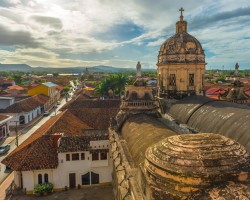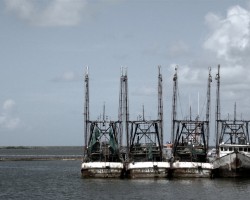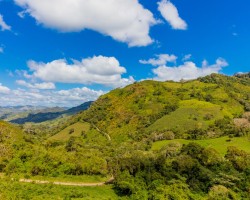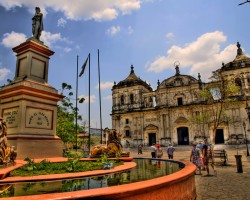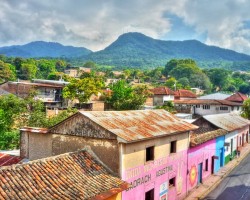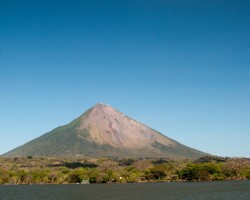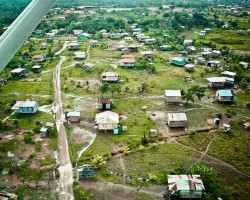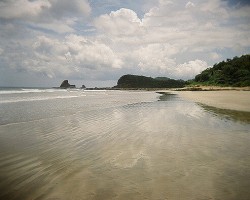Best time to go to Nicaragua for a perfect weather and where to go?
When is the best time to go to Nicaragua?
The best time to visit Nicaragua is from November to May, which corresponds to the dry season. However, the climatic conditions are not the same everywhere in the country, and a trip year-round is possible if you choose the regions you will visit wisely.
The choice of your vacation dates will also depend on the experiences you wish to have on-site:
- If you dream of going on a surf trip to Nicaragua, head to the Pacific coast! The waves are present all year round: in the dry season, they are quite calm but consistent, making them ideal for beginner or intermediate surfers. In contrast, during the rainy season, especially in August and September, the swell is more powerful, perfect for experienced surfers.
- To see humpback whales, go to the east coast between January and March. Thousands of cetaceans flee the North Atlantic to breed in the warm waters of the Caribbean.
- When to go to Nicaragua for hiking? In the northern mountains, the best time is from November to April, as well as in July and August. To climb the volcanoes in the León region, it is preferable to go from November to May, or in July.
- To explore the Caribbean coast, the weather is favorable between February and May. Although humid throughout the year, these are the driest months, offering beautiful sunny days to enjoy the beach and natural reserves.
- For a nature stay discovering the flora and fauna around the Río San Juan, the ideal time to travel to Nicaragua is between December and May, but the rainy season is less pronounced there than elsewhere, so a stay between June and November is also quite feasible.
- Tourist traffic is also a factor to consider if you want to be peaceful and not spend too much money. The high season occurs during two periods: December to February and in July-August, but it is in December, for the year-end holidays, that the number of tourists is highest in Nicaragua.
In summary, if you want to explore different regions of the country while enjoying great weather, fewer crowds, and reasonable airfare, the ideal times to go are in January, between March and May, or in November.
Where and when to go based on the weather?
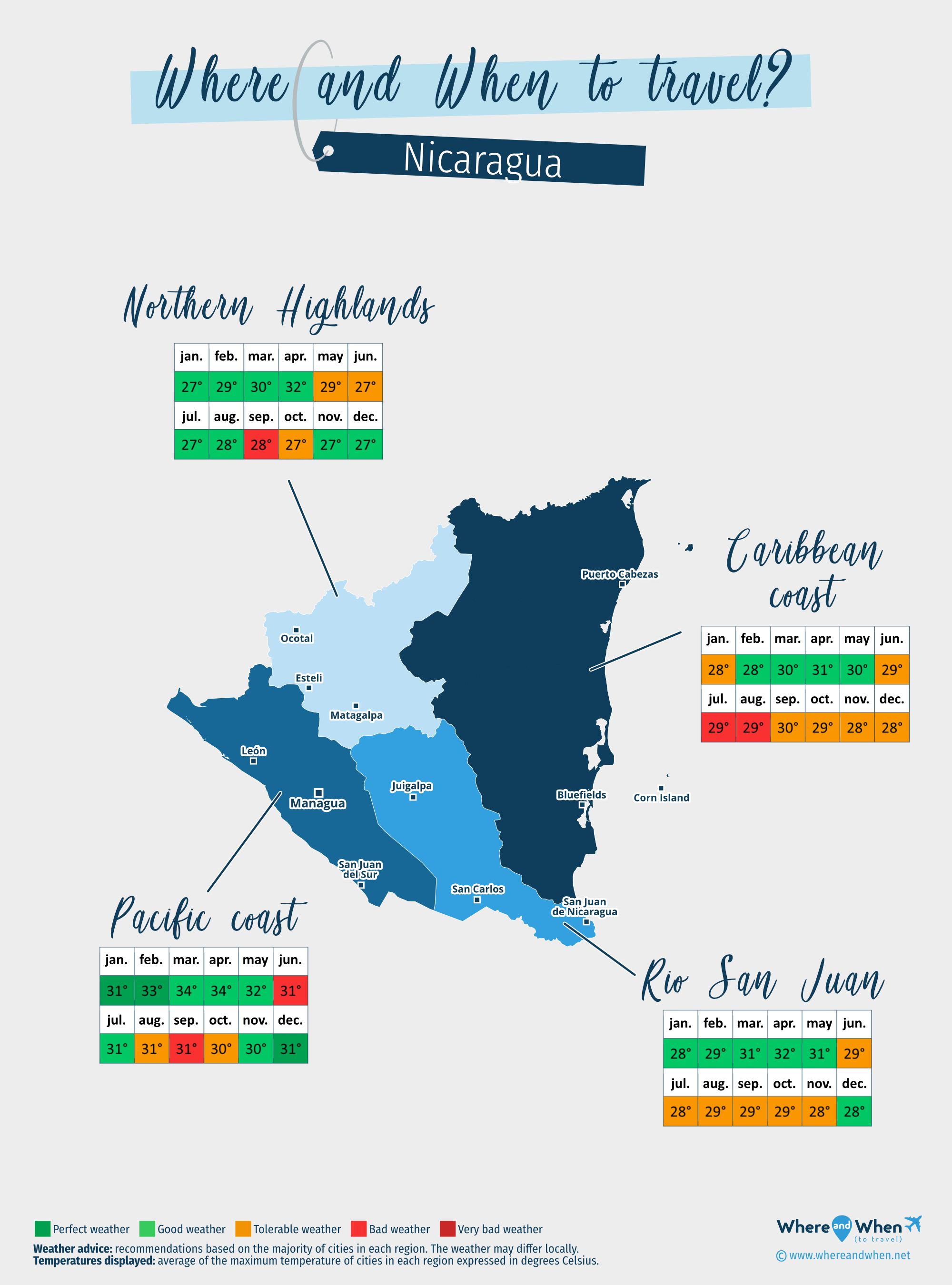
Caribbean coast of Nicaragua
Bluefields, Puerto Cabezas (Bilwi), Corn Island...
Northern Highlands
Esteli, Matagalpa, Ocotal...
Pacific coast of Nicaragua
Managua, León, San Juan del Sur...
Rio San Juan
San Juan de Nicaragua, San Carlos, Juigalpa...
To get all the information about the climate and weather in Nicaragua for a specific month, click on the corresponding link below:
Nicaragua in january Nicaragua in february Nicaragua in march Nicaragua in april Nicaragua in may Nicaragua in june Nicaragua in july Nicaragua in august Nicaragua in september Nicaragua in october Nicaragua in november Nicaragua in december
Best time to travel to Nicaragua by cities
Climate and Weather in Nicaragua
Nicaragua is a country in Central America located between the Caribbean Sea and the Pacific Ocean, bordered by Costa Rica to the south and Honduras to the north.
The climate in Nicaragua is of several types:
- A tropical savanna climate with a dry winter is predominant as it covers 66% of the territory. It can be found along the entire Pacific coast up to the Granada region, as well as in a large part of the northern mountains and the Río San Juan.
- A tropical monsoon climate prevails along the Caribbean coastline and in forested areas such as the Bosawás Natural Reserve, in the northern mountains, and the Indio Maíz Biological Reserve of the Río San Juan.
- An equatorial climate with abundant rainfall and a constant temperature throughout the year is present at the border with Costa Rica, near San Juan de Nicaragua.
In summary, the weather is drier on the Pacific coast, cooler in the mountainous regions, and more humid on the Caribbean coast. Additionally, the weather in Nicaragua is marked by two seasons:
- The rainy season (or invierno), which lasts from May to November, is characterized by regular and sometimes intense showers. This period is longer and wetter on the east coast than elsewhere in the country. The risk of hurricanes is highest in September and October, particularly on the Caribbean coast. Therefore, it is advisable to be cautious if you are traveling during this time.
- The dry season (or verano), which extends from December to April, is not only less rainy but also cooler.
Due to its geographical position, between the Tropic of Cancer and the equator, the temperature range is low in Nicaragua. Thus, there are few temperature differences between day and night, or even between the seasons.
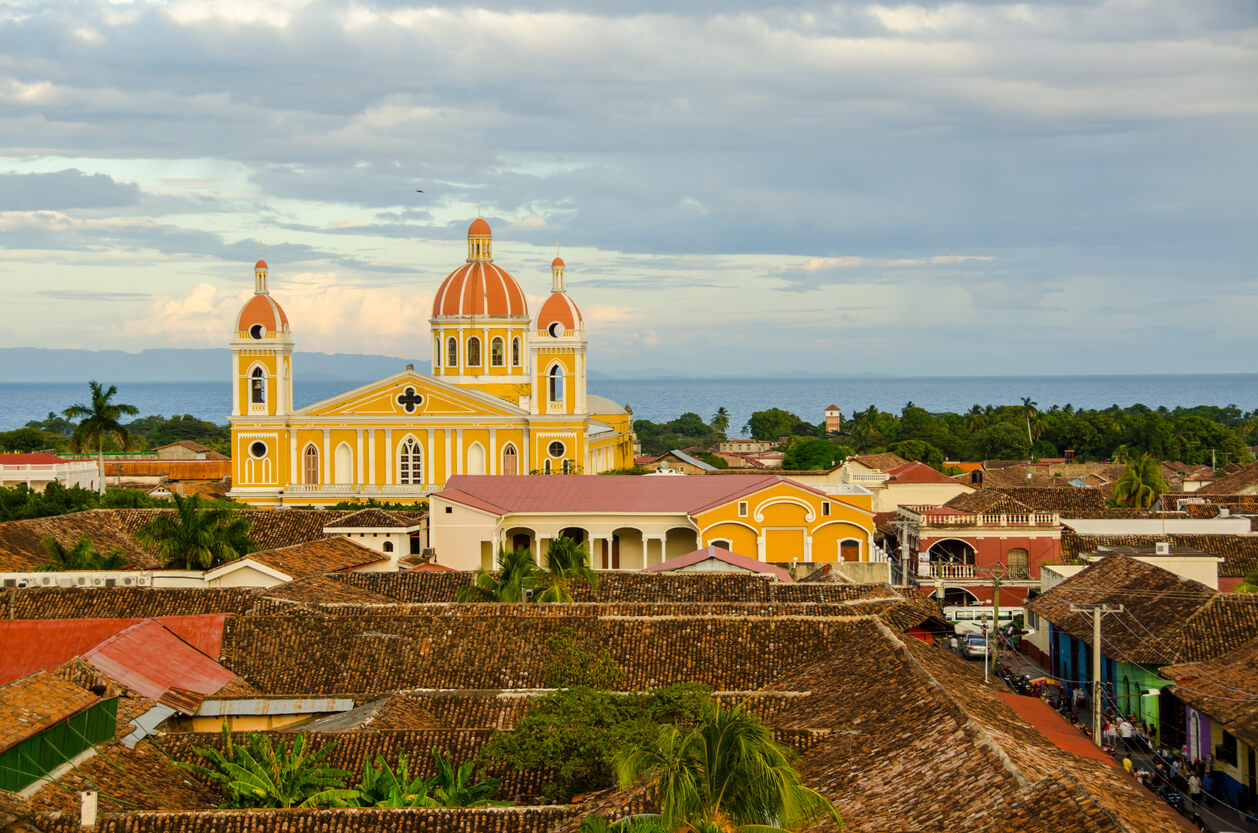
Climate on the Caribbean Coast
With its monsoon tropical climate, the Caribbean coast, located in the eastern part of the country, experiences heavy rainfall and the only truly favorable months to visit are between February and May. During this period, showers are not to be excluded, but they are short-lived and most often occur in the late afternoon or at night.
Between June and January, it is the rainy season, with a peak in July and August. To give you an idea of the extent of the phenomenon, it rains in July in Bluefields the equivalent of an entire year in Paris!
In terms of temperatures, it ranges from 27 to 31°C (88°F) during the rainy season, with September being the hottest month, and between 30 and 33°C (92°F) in the dry season, with April showing scorching averages. At night, expect generally 1 to 3 degrees less than during the day. As for the Caribbean Sea, it offers very pleasant swimming temperatures: between 27 and 30°C (86°F) depending on the period.
All year round, the humidity level is high in this region of Nicaragua, around 80%.
Climate in the Northern Mountains
In the mountainous regions, the climate is rather tropical, although it is tempered by altitude.
- Temperatures fluctuate between 28 and 33°C (92°F) . December is the coolest month and April the hottest. Like on the east coast, expect about 2 to 3 degrees less at night.
- It rains the most in May, September, and October, while during the dry season, precipitation is almost nonexistent, particularly in January.
Climate on the Pacific Coast
In the western part of Nicaragua, the Pacific coast experiences weather characterized by a longer dry season than elsewhere: from early November to late May, with the addition of the month of July. During the two rainy periods, it is in June and September that the showers are the most intense.
From May to February, the average temperature is between 33 and 36°C (97°F) , but in March and April, the thermometer rises around 38°C (101°F) . At night, temperatures are more pleasant, about 5 to 7 degrees less than during the day.
The water of the Pacific Ocean shows idyllic values: around 29°C (85°F) all year round with peaks at 30°C (86°F) during the wet seasons.
Climate in the Río San Juan
In this region of southern Nicaragua, the dry season, between December and May, is particularly conducive to travel. One can expect temperatures between 30 and 34°C (94°F) , with April being the hottest month and December the “coolest.” At night, it is generally 4°C (40°F) cooler. Isolated showers may occur, particularly in April, May, and December.
During the rainy season, from June to November, it rains the most in June, July, and October. The thermometer then hovers around 30°C (86°F) and the temperature variation is less significant than the rest of the year since it is only 2°C (36°F) cooler at night.
Temperatures and rainfall in Nicaragua
On these 3 graphs, we present the evolution of temperatures of Nicaragua and month-by-month rainfall for the cities of Managua, Bluefields, Esteli, León and Corn Island, as well as the month-by-month sea temperature for coastal cities.
Peak visitor numbers and tourist seasons in Nicaragua
Find out when Nicaragua has its high tourist season (the period when the influx of tourists is highest) and off-peak tourist season using our data and figures.
Tourist seasons in Nicaragua
The months with low numbers of tourists are: January, March, April, May, June, September, October and November. The number of visitors to Nicaragua is high in: February, July, August and December.
- Very low season in Nicaragua: May, June, September and October.
- Low season in Nicaragua: January, March, April and November.
- High season in Nicaragua: February, July and August.
- Peak season in Nicaragua: December.
Figure: Visitor index for Nicaragua month by month
Average price for flights to Nicaragua
A return flight between Montreal and Managua is generally cheaper if you go in may ($ 543 on average): this is the best time for travellers on a tight budget. In contrast, you may end up paying $ 235 more for your airline ticket to Managua if you go in december.
Find the best price for your flight Flight prices to Nicaragua
Where to go in Nicaragua?
This table allows you to see the maximum temperature for each city and our opinion on the weather month by month (see colour legend below the table).
| Cities | jan. | feb. | mar. | apr. | may | jun. | jul. | aug. | sep. | oct. | nov. | dec. |
| Managua | 90°F | 94°F | 95°F | 97°F | 94°F | 90°F | 90°F | 90°F | 88°F | 86°F | 88°F | 88°F |
| Bluefields | 83°F | 85°F | 86°F | 88°F | 88°F | 86°F | 85°F | 86°F | 86°F | 86°F | 85°F | 83°F |
| Esteli | 83°F | 86°F | 88°F | 92°F | 86°F | 83°F | 83°F | 83°F | 83°F | 81°F | 81°F | 81°F |
| León | 94°F | 95°F | 97°F | 97°F | 94°F | 90°F | 92°F | 92°F | 90°F | 88°F | 88°F | 92°F |
| Corn Island | 83°F | 83°F | 85°F | 86°F | 86°F | 85°F | 85°F | 85°F | 86°F | 85°F | 83°F | 83°F |
| Juigalpa | 88°F | 90°F | 92°F | 94°F | 90°F | 88°F | 88°F | 88°F | 88°F | 86°F | 86°F | 86°F |
| Matagalpa | 81°F | 85°F | 86°F | 90°F | 86°F | 83°F | 83°F | 83°F | 83°F | 81°F | 79°F | 79°F |
| Ocotal | 83°F | 85°F | 86°F | 88°F | 85°F | 81°F | 81°F | 83°F | 83°F | 81°F | 81°F | 81°F |
| Ometepe Island | 86°F | 88°F | 90°F | 92°F | 90°F | 88°F | 86°F | 88°F | 88°F | 86°F | 86°F | 86°F |
| Puerto Cabezas (Bilwi) | 83°F | 85°F | 86°F | 88°F | 88°F | 86°F | 86°F | 86°F | 88°F | 86°F | 85°F | 85°F |
| San Carlos | 83°F | 86°F | 88°F | 90°F | 88°F | 86°F | 85°F | 85°F | 86°F | 85°F | 83°F | 83°F |
| San Juan de Nicaragua | 81°F | 83°F | 83°F | 85°F | 85°F | 85°F | 83°F | 85°F | 85°F | 85°F | 83°F | 81°F |
| San Juan del Sur | 86°F | 88°F | 90°F | 92°F | 90°F | 88°F | 86°F | 88°F | 88°F | 86°F | 86°F | 86°F |
| Aposentillo | 92°F | 92°F | 94°F | 94°F | 92°F | 88°F | 90°F | 90°F | 88°F | 86°F | 88°F | 90°F |
| Bonanza | 83°F | 85°F | 88°F | 92°F | 88°F | 85°F | 85°F | 86°F | 86°F | 85°F | 85°F | 83°F |
| Cayos Miskitos | 83°F | 83°F | 85°F | 86°F | 86°F | 85°F | 85°F | 86°F | 86°F | 85°F | 85°F | 83°F |
| Cayos Perlas | 83°F | 83°F | 85°F | 86°F | 86°F | 85°F | 85°F | 85°F | 86°F | 85°F | 83°F | 83°F |
| Corinto | 95°F | 97°F | 101°F | 101°F | 95°F | 92°F | 94°F | 94°F | 92°F | 90°F | 90°F | 94°F |
| El Almendro | 83°F | 85°F | 86°F | 90°F | 88°F | 85°F | 83°F | 85°F | 85°F | 85°F | 83°F | 83°F |
| El Astillero | 86°F | 86°F | 88°F | 90°F | 88°F | 86°F | 86°F | 86°F | 86°F | 85°F | 85°F | 85°F |
Legend:
perfect weather
good weather
tolerable weather
bad weather
very bad weather
About Nicaragua
What can I do in Nicaragua?
Beaches / swimming
Nature and countryside
Culture and heritage
Sports
Family travel
Crafts / shopping
Gastronomy
Nightlife
Is this weather information for Nicaragua reliable?
Climate data for Nicaragua has been gathered every day since January 2009. The analysis of these meteorological data for Nicaragua allows us to determine the average for each month in Managua, Bluefields, Esteli, León, Corn Island, Juigalpa, Matagalpa, Ocotal, and 55 other cities.
So yes: this data is reliable except in cases of temporary climate disruption in the region.

